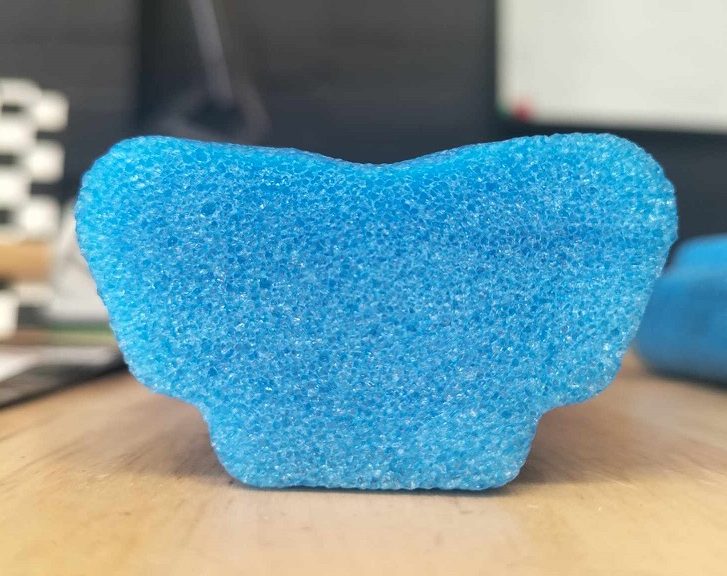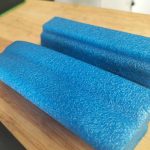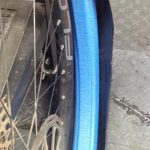
MTB Tyre Inserts: Worth it?
I’ve installed (and removed) countless tyre inserts/ rim protectors for customers who specifically requested it over the years, but was never tempted to run them myself. A wholesaler offered to throw a pair of inserts into a recent order for me at a ridiculously low price recently, so I figured I had nothing to lose. The plan was to fit them when my Norco Sight needed fresh rubber, and that opportunity presented itself a few weeks ago. It’s worth pointing out that these inserts retail at over $100 each, including a tubeless valve. So $200+ worth of protection. Remember this number, we’ll come back to it.
I don’t actually want to identify the exact product I used, for reasons that will become clear in a minute. If you recognise it by the photos, well…good job 😀
The problems that inserts are supposed to solve are not actually problems I have HAD so far aboard my beloved Norco, on stock rims and tyres. Assegai/DHR on STANS FLOW rims. I’m not at all precious about these rims. I haven’t had any unwanted rim strikes. I haven’t burped any tyres off the rim. I haven’t been starved of traction due to my higher tyre pressures (I’m 100kg dressed to ride, I have to run higher pressures than most). Hell, I haven’t even had a PUNCTURE on the stock rubber.
The ONLY claimed benefit I was really interested in was a more muted/damped feel at the contact patch. Given my combination of 35mm alloy bars, relatively thin grips and higher-than-thou tyre pressures I do notice high frequency chatter. Maybe tyre inserts would be the final piece of my setup puzzle and I would be endowed with The Best Version Of My Bike it was possible to have.
Alas, it was not to be.
First of all, they’re not easy to fit. Tyre inserts are almost universally irritating to fit, especially with brand new tyres. I have spent years building my reputation as The Man With The Iron Thumbs. My customers adore me. Their tyres fear me. Tyres and tubes get changed in seconds without the aid of a tyre lever beyond breaking the first small patch of bead. There is absolutely no shame if you’re a regular consumer (not a pro mechanic) in handing the job over to your shop.
Despite feeling almost weightless in your hands, they add a shockingly noticeable amount of rotating mass front and rear. They are made of a closed cell foam so they don’t absorb sealant but they do add a huge amount of surface area to the inside of each tyre, requiring at least 50% more sealant than normal. I had to double my sealant volume to get a brand new tyre to seal properly. My Norco is not an energetic climber but it most certainly gets itself to the top of any climb I point it up, without any fuss, and and without feeling slower than it ought to. The weight of two inserts plus the required volume of sealant blunted the Sights response to my pedal inputs to such an extent it reminded me what it was like to pedal a full blown DH bike on dual-ply tyres up a trail. It’s THAT bad.
Secondly, I haven’t been able to change my tyre pressures, I’m not running them any softer now that the rim has some protection. Running lower pressures only makes it pedal even slower. However, during a run where I deliberately ran lower pressures than normal, it was obvious that the inserts most certainly do protect the rim. Not a single rock or root was able to make contact with the rim. The absurdly low pressure was certainly a novelty, making rough gravelly trail feel like a billiard table – but running low pressure on tyres without inserts does exactly the same thing.
During this deliberate low-pressure run I paid attention to how stable the tyres were under cornering and braking load. It does seem like the inserts make the tyres virtually immune to burping, but they don’t do anything at all to prevent excessive wrinkling or rolling of the tyre when the forces involved overwhelm the available pressure. The tyres still squirm around at the limit, serving up plenty of those weird ‘frictionless’ moments we riders feel when our rims are free to move around independently of the tyre.
Disappointed but not defeated, I returned to the top of the hill with sensible pressures, really wanting to see if they muted that high frequency chatter that was so prevalent on one of my favourite high speed sections. Well…..no. In fact I think the added mass of the inserts and sealant negatively affected my suspensions ability to respond to the terrain. I played with LSC and LSR for a few repeat runs, no combination of settings was able to match my regular tyre/pressure/fork/shock setup. These observations were backed up by my strava times too. I was consistently 3 seconds slower on a 2 minute trail DESPITE being able to plow through rocky sections I normally have to be quite delicate through. I believe I lost a full second in the high speed chatter, another second under brakes and another in corner exits on the pedals.
The next logical step in trying to figure out who these tyre inserts would best serve, was towards those who own expensive carbon rims and want to protect them. If I owned super high performance, lightweight carbon rims, I believe the inserts would defeat the purpose of the rims. Plus, the best brands pretty all much have their own version of a No Questions Asked warranty policy. So there’s no huge risk at play here.
If you just run high quality alloy rims…..well….the price of a PAIR of glorified pool noodles is on par with the price of a new rim from pretty much any big name you can think of. DT Swiss. Race Face. Stans. Mavic. Hunt. Nukeproof. You could replace any of these rims for a similar amount of money, with none of the on-trail drawbacks I’ve just listed. If you don’t have the skills to lace up your new rim, then obviously you have to pay someone like us to do it for you – but the same would then hold true for installing the inserts, you probably would have also paid a pro to fit them for you. Same same.
So if tyre inserts DON’T add any real value out on trail…….and they’re pointless on expensive rims…..and they’re pointless on cheaper rims…..do they have a purpose ANYWHERE?
I can think of ONE situation. 100% pure gravity fed downhill riding. On fleet bikes that get rented out at bike parks. That’s the only situation I can think of where the rider wouldn’t suffer, and the shop that owns them spends less time getting dings out of rented bike wheels. That’s it.
So, save the $200 and the time needed to fit the inserts. Instead, pay attention to your tyre pressures, suspension settings, and get better at sighting and riding good lines through chunky terrain.



